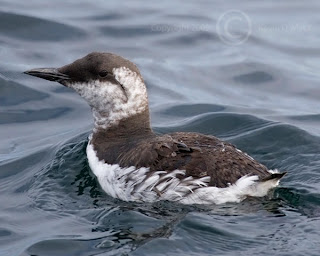 As I stood at the edge of a small estuarine inlet near Conway, WA, I looked out over a sparsely vegetated tideland toward the shimmering waters of Puget Sound. Beyond the jumble of drift logs, mud, crisscrossing sloughs and salt-tolerant plants, a cacophony of bird voices could be heard emanating from the open water. I could see the birds as well, although the intervening distance made my eyes perceive the mass of feathered bodies as a single large organism rather than thousands of individuals. Occasionally the voices were muffled by the sound of many pairs of large feet slapping loudly and repeatedly against the water’s surface. This was always followed by the distinct honks of airborne Trumpeter Swans approaching, passing overhead and then continuing inland to feed in the fertile fields of the Skagit Valley.
As I stood at the edge of a small estuarine inlet near Conway, WA, I looked out over a sparsely vegetated tideland toward the shimmering waters of Puget Sound. Beyond the jumble of drift logs, mud, crisscrossing sloughs and salt-tolerant plants, a cacophony of bird voices could be heard emanating from the open water. I could see the birds as well, although the intervening distance made my eyes perceive the mass of feathered bodies as a single large organism rather than thousands of individuals. Occasionally the voices were muffled by the sound of many pairs of large feet slapping loudly and repeatedly against the water’s surface. This was always followed by the distinct honks of airborne Trumpeter Swans approaching, passing overhead and then continuing inland to feed in the fertile fields of the Skagit Valley. Trumpeter Swans are legally protected by both the State of Washington and the Federal Government. This protection allows the enormous, white birds to move from their night haven on the water to their daytime feeding grounds in relative safety. They have earned their free pass for the dubious distinction of having been nearly eradicated by overhunting and lead poisoning in the recent past. Watching Trumpeter Swans fly overhead, it boggles my mind that it took a legal decree to prevent humans from killing them until they existed no more. Is it that my sense of aesthetics is so different from my fellow humans, or is grace and beauty completely obscured when viewed through the sights of a gun?
As the sun rose higher in the sky, birds less protected than Trumpeter Swans began to make the journey inland to their feeding grounds. I had been hearing the concussive reports of shotguns since I had arrived in the Skagit Valley, and I had no reason to believe I would not see what I most wished I wouldn’t. Decoys littered the fields, and men in camouflage were encountered at every turn. But it was a particularly cruel twist of fate that the “preserve” in which I was standing, and in which no hunting was allowed, had an excellent view of the farm fields to the west where no such restrictions existed.
An enormous flock of Snow Geese took to the air. They gained altitude much more rapidly than the heavier-bodied Trumpeter Swans as they headed north toward their feeding grounds. When they reached the dike separating the farm field to the west from the tidelands beyond, they had reached a height that I believed no shotgun could reach. As the geese passed over the dike, their chorus of calls was temporarily drowned out by a series of explosions. Blast after blast came from the farm field, and I could hear the sound of shot slicing through the air as it traveled upward. After several seconds of this, with no sign of any bird being hit, I thought my original assumption of the safety of their altitude was correct. One last blast made clear the error of my judgment.
A goose on the outer limit of the formation suddenly faltered. Her wing, that only moments before had been solid white with a black tip, crumpled as a swath of red appeared and spread in the middle. Her forward momentum collapsed as she moved first in an arc, and then straight downward toward the ground below her. Her good wing flapped uselessly, while her broken wing trailed like a tangled and ineffective parachute behind her. Her eyes were wide open, and her beak opened and closed as she continued to draw breath after agonized breath while plummeting to the earth some 200 feet below. I watched her all the way down. She still lived when she passed out of sight behind the dike to the west, and I heard the muffled impact of her feathered body as it collided with solid ground. I hoped that noise had heralded the end of her suffering.
As camouflaged men with guns converged on the spot in which the goose had fallen, I turned to leave. On the way to the car I passed a group of four middle-aged men, all in camouflage, who had just watched the same event that I had witnessed. They looked off in the direction that the goose had fallen with broad smiles on their faces. The look I had seen in the eyes of the dying goose was still fresh in my mind, and the smiles on the faces of the men combined with the terrified look of the goose to create a disturbing paradoxical image. Now, a few days later, I still can’t shake the image. I have a feeling it will be with me for some time to come.













